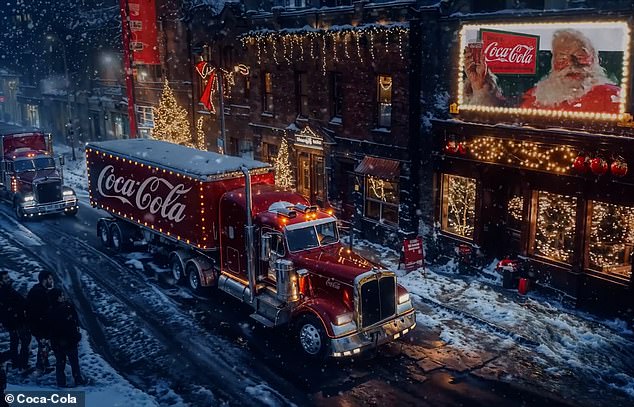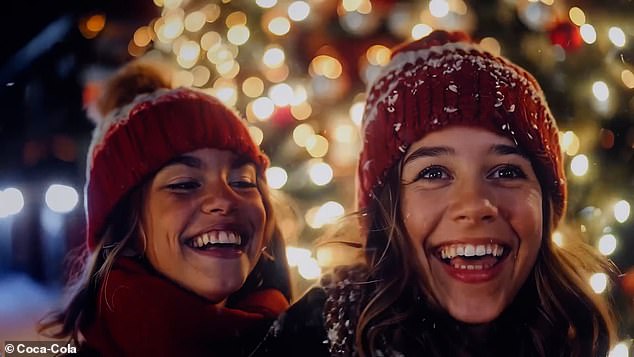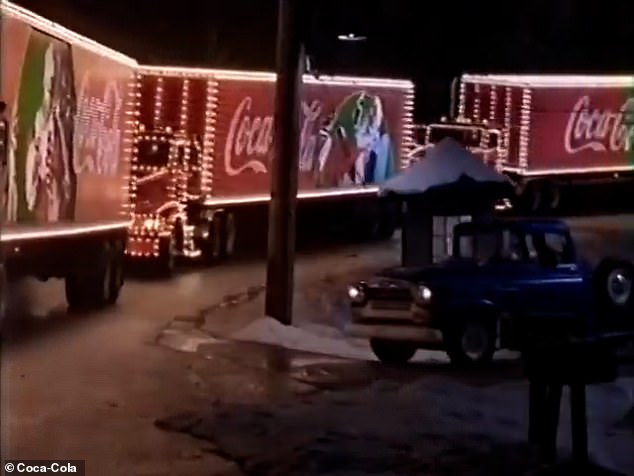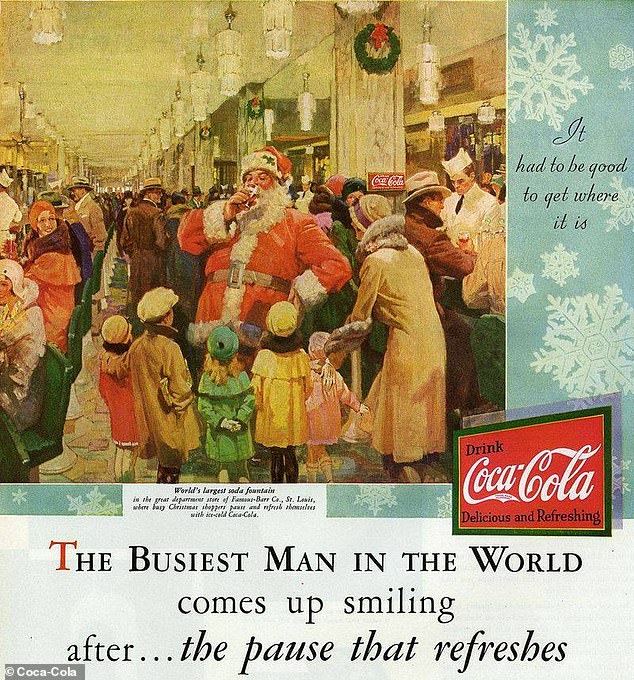For many people around the world, Coca-Cola’s much-loved ‘Holidays are Coming’ advert marks the beginning of Christmas.
First aired in 1995, the ad shows the soft drink giant’s red delivery trucks emblazoned with lights making festive deliveries through a snowy landscape.
Ever since, variations of the promo have arrived in the weeks leading up to Christmas – but now the company has made the biggest change yet.
The new 16-second ad for 2024 has been developed solely using AI, meaning all the ‘actors’ are not real people and none of the shots were filmed on location.
While the firm claims the new commercial was an ‘efficient’ way of saving time and money, fans are not impressed.
Many have taken to X (Twitter) to slam the ad, calling it ‘garbage’, ‘ugly’ and ‘too niche’, while calling the multi-billion-dollar corporation ‘lazy’.
One X user posted: ‘just saw an ai generated coca cola commercial on tv… genuinely how are we letting this happen.
‘I feel like im watching the death of art and our planet unfold in front of my eyes and no one irl [in real life] seems to care.’

!['Maybe the worst possible thing to use AI is for the coke-cola [sic] christmas advert!!!!' The beloved advert gets millions of TV viewers in the festive spirit](https://right360.news/wp-content/uploads/2024/11/92102043-14086023-_Maybe_the_worst_possible_thing_to_use_AI_is_for_the_coke_cola_s-a-94_1731666431843.jpg)

A second commentator described the ad as ‘so fkn ugly’, while a third posted: ‘the world is so over if the christmas Coca Cola advert is made with AI.’
Someone else posted to say they’re ‘fuming’ and ‘outraged’ about the clip, adding that it looks ‘utter s***, while another said it made them feel ‘immediately sick’.
Since the original nearly 30 years ago, Coca-Cola’s annual ‘Holidays are Coming’ adverts have used real actors and two tonne trucks decked with Christmas lights.
But this year’s ad has been developed solely using AI, meaning every element the viewer sees is a figment of a machine’s ‘imagination’.
Generally, the use of AI in advertising and the arts has proved a controversial move, as some critics feel it forces creative types out of work.
One commentator called it ‘kinda sad’, while someone else posted: ‘Maybe the worst possible thing to use AI is for the coke-cola [sic] christmas advert!!!!’
Coca-Cola has said the new commercial – made with three AI studios Secret Level, Silverside AI and Wild Card – was an ‘efficient’ way of saving time and money.
It relied on ‘generative’ AI – where clever AI systems are trained on a large amount of data to generate new video, images, text and other content.







Javier Meza, the EU chief marketing officer at Coca-Cola, said the company wanted to adapt to ‘today’s times’, with the use of a more diverse cast and AI technology.
‘We didn’t start by saying, “OK, we need to do this with AI”,’ Mr Meza told Marketing Week.
‘The brief was, we want to bring Holidays Are Coming into the present and then we explored AI as a solution to that.’
In an official company statement, a spokesman called it an ‘exciting venture into AI-generated storytelling’.
‘[It] demonstrates Coca-Cola’s commitment to embracing innovation, leveraging our collaborations with top creative and technology partners, while staying true to its core values – spreading happiness and creating real magic.’
While the holiday advert’s history only spans the past 30 years, Santa has been featured in Coca‑Cola ads since the 1920s.
However, it’s a total urban myth that Coca‑Cola created the legend of Santa Claus, as is the rumour that Coca‑Cola made Santa red.
Before Coca‑Cola was invented in 1886, Santa Claus had appeared in numerous illustrations and books wearing a scarlet coat.


However, the fizzy drinks firm claims to have played a role in shaping the fat, jolly character we know today.
In 1930, Chicago-born artist Fred Mizen was commissioned to paint Santa drinking the beverage in front of the world’s largest soda fountain, located in the Famous-Barr department store in downtown St Louis, surrounded by adoring children.
Mizen’s painting was used in print ads that Christmas season, appearing in The Saturday Evening Post in December 1930.
The following year, Coca‑Cola commissioned Michigan-born illustrator Haddon Sundblom to develop advertising images using Santa Claus.
For inspiration, Sundblom turned to Clement Clark Moore’s 1822 poem ‘A Visit From St. Nicholas’, commonly called ”Twas the Night Before Christmas’.
Moore’s description of St. Nick led to an image of a warm, friendly, pleasantly plump and human Santa.

